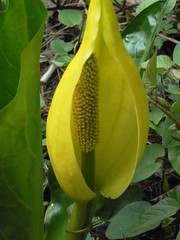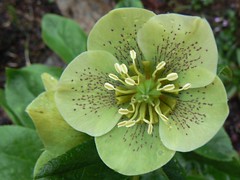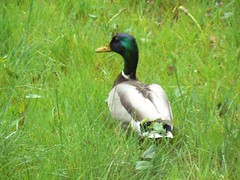It was clear and sunny today, so I bailed on my household chores and headed outside. My church's annual leaf-raking party took place a couple of weeks ago, so I had a ready supply of oak leaves to use to mulch my perennial and shrub beds. Most instructions recommend shredding leaves for mulch, and that's great advice. When I've used shredded leaves, they broke down into soft, rich humus by spring. I don't have a shredder, however, and I'm way too lazy to run over the leaves with the mower, then gather them up again to mulch the beds. So I just dump the leaves on my beds as is and hope for the best. They do tend to mat a bit, but that helps with weed suppression and doesn't seem to cause problems. Come spring, I'll dump about 3" of compost on what's left of the leaves and fertilize the shrubs and roses. I've gone through this routine for two years in a row, and I find that instead of spending an hour or two every other week weeding from March through July, I spend only a few minutes per week. The soil is also getting much better. It was mostly clay when I started, but now I have really nice, soft humus in most of the bed.
I'm sure there are several sound horticultural reasons why I shouldn't dump a truckload of oak leaves on my perennial beds. But since weeds are my #1 garden problem, the method seems to work for me.
Field Trip, Part 2: Ocoee, FL
-
Leaving Weeki Wachee, Joe and I drove on a four-lane divided highway that
cuts through or comes very close to some of Central Florida’s smaller
towns. Our ...
2 months ago





